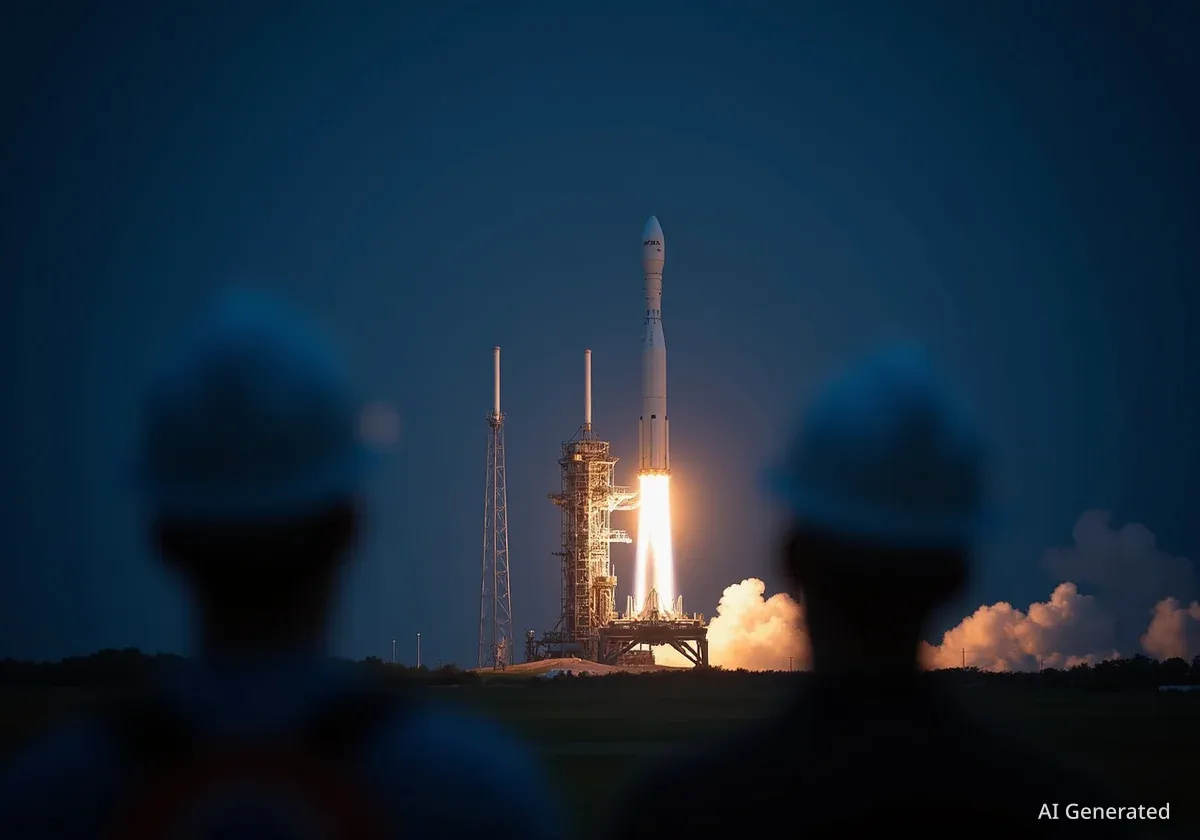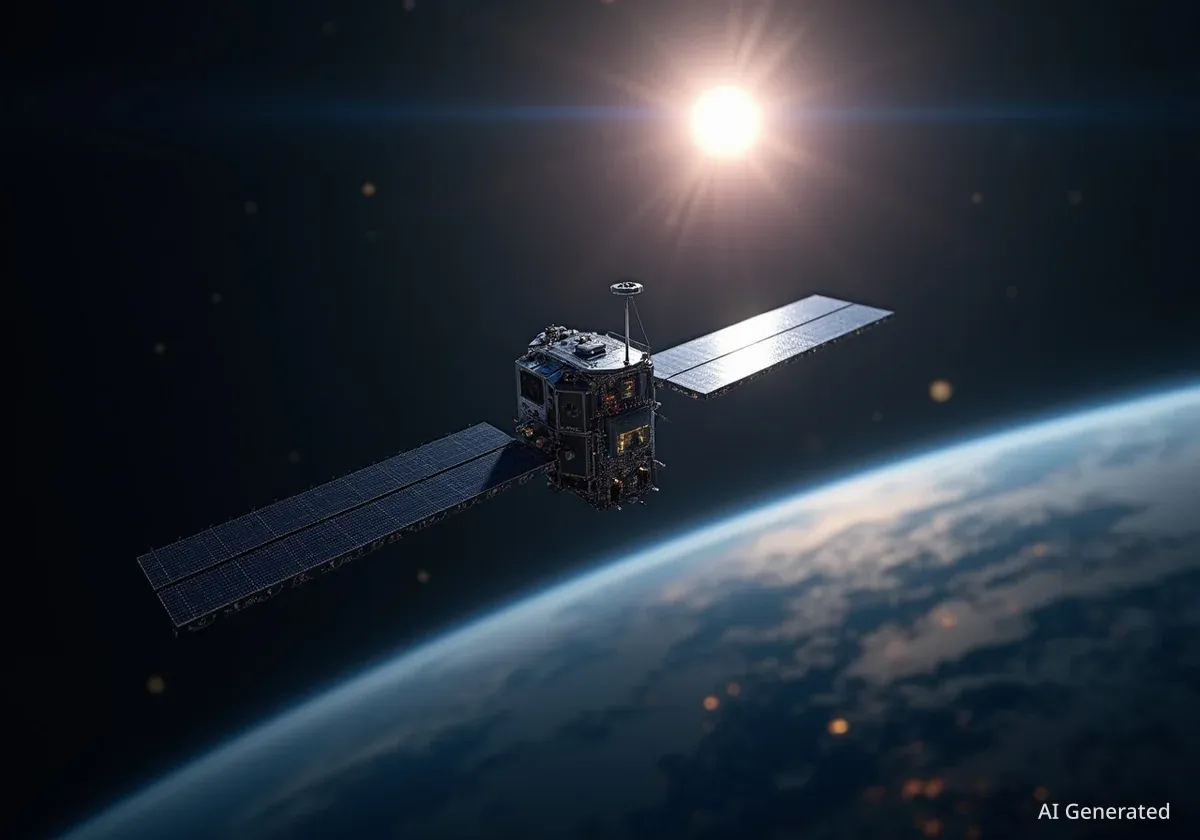WISeKey, a global cybersecurity and IoT firm, has announced plans to test advanced post-quantum communication technology in space. The company's subsidiary, WISeSat.Space, will launch a nanosatellite aboard a SpaceX Falcon 9 rocket on November 10, 2025, from Vandenberg Space Force Base in California. This mission aims to validate new encryption methods designed to protect satellite communications from the future threat of quantum computers.
Key Takeaways
- Mission Launch: A WISeSat nanosatellite is scheduled to launch on a SpaceX Falcon 9 rocket on November 10, 2025.
- Primary Goal: To conduct one of the first in-orbit tests of post-quantum communication protocols for secure satellite-based IoT connectivity.
- Core Technology: The satellite features post-quantum cryptographic semiconductors from SEALSQ Corp and WISeKey's own Root of Trust technology.
- Future Plans: This launch is a precursor to a larger constellation, with four additional post-quantum-ready satellites planned for deployment in 2026.
Next-Generation Security in Orbit
The upcoming launch represents a critical step in developing secure communication networks that can resist attacks from future quantum computers. WISeKey, through its collaboration with subsidiary SEALSQ, is positioning itself at the forefront of this emerging security field. The mission's primary objective is to test and validate post-quantum encryption under the harsh conditions of space.
This test will provide real-world data on the performance of SEALSQ's specialized semiconductors. These chips are engineered to implement cryptographic algorithms that are believed to be secure against both classical and quantum computers. Establishing this technology in orbit is essential for safeguarding future satellite-based services.
The Quantum Computing Threat
Quantum computers, once fully developed, are expected to be capable of breaking many of the encryption methods currently used to secure digital communications, financial transactions, and sensitive data. Post-quantum cryptography (PQC) is a new generation of cryptographic systems designed to be secure against these powerful future machines. Proactively testing PQC in critical infrastructure like satellites is a vital step in preparing for this technological shift.
The Technology Powering the Mission
The nanosatellite is equipped with a combination of proprietary technologies designed to create a secure end-to-end communication chain. This system protects data from the satellite to ground stations and ultimately to connected Internet of Things (IoT) devices.
Integrated Security Components
The core of the security architecture relies on two key elements. First, SEALSQ's post-quantum cryptographic semiconductors provide the hardware-level foundation for running advanced encryption algorithms. Second, WISeKey's Root of Trust (RoT), a cryptographic security feature, ensures the integrity and authenticity of all communications and devices within the network.
"By testing post-quantum communications directly from space, we are showcasing the future of trusted connectivity, one that is both quantum-secure and universally accessible," stated Carlos Moreira, Founder and CEO of WISeKey. "This mission demonstrates our continued commitment to building a global, resilient, and sovereign infrastructure that can safeguard digital assets and data exchanges against the next generation of cybersecurity threats."
A Foundation of Trust
WISeKey has already deployed over 1.6 billion microchips across various sectors, securing a vast range of IoT devices. This extensive experience in hardware-based security provides the foundation for its expansion into space-based communication networks.
Building a Secure Global IoT Network
This single launch is part of a much larger strategy for WISeKey. The company's WISeSat division is developing a constellation of nanosatellites intended to provide low-cost, secure IoT connectivity on a global scale. This network is designed to serve critical sectors that require reliable and tamper-proof data transmission.
Applications and Future Expansion
Potential applications for the WISeSat constellation include:
- Energy: Monitoring and securing power grids and remote infrastructure.
- Logistics: Tracking assets and ensuring supply chain integrity.
- Infrastructure: Managing smart city sensors and critical public works.
- Climate Monitoring: Securely collecting and transmitting environmental data from remote locations.
Following the November 2025 test mission, WISeKey plans to accelerate the deployment of its network. The company has announced that four additional post-quantum-ready satellites are scheduled for launch in 2026. These future satellites will incorporate enhanced technologies, further building out a robust and secure global communication infrastructure.





